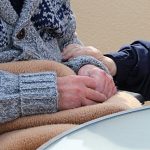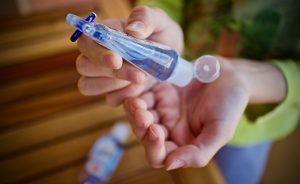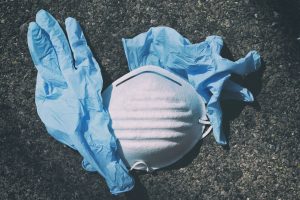 A Washington state nursing home that had at least 37 Covid-19 deaths faces a fine of more than $611,000, according to federal inspectors.
A Washington state nursing home that had at least 37 Covid-19 deaths faces a fine of more than $611,000, according to federal inspectors.
The facility could also lose Medicare and Medicaid funding if it does not correct a plethora of deficiencies that led to the country’s first major outbreak of the novel coronavirus.
In a letter Wednesday to Life Care Center of Kirkland, the Centers for Medicare and Medicaid Services wrote that the nursing home failed to report an outbreak of respiratory illness to local authorities for two weeks as required by law, gave inadequate care to its residents during the outbreak and failed to provide 24-hour emergency doctor services.
The inspectors said that if the nursing home northeast of Seattle “does not correct all deficiencies and return to full compliance by September 16, 2020, then CMS will terminate your facility from participating in the Medicare/Medicaid program.”
As of Thursday afternoon, Life Care had not responded to a request for comment on the inspection findings and the penalties. The company has a right to appeal.
Inspectors levied a per-day civil penalty of $13,585 for the alleged deficiencies, dating to Feb. 12, around the time that the outbreak is thought to have taken hold, and continuing through March 27. They said the fine could be raised, or lowered, depending on the facility’s compliance with its correction plan.
In addition to losing its federal payments under the Medicare and Medicaid programs, the facility also could lose its Nurse Aide Training and Competency Evaluation Program and forfeit federal payment for the patients it admitted from March 21 to March 27.
Officials said that 129 residents, staff and visitors were infected with the coronavirus, which causes mild-to-moderate symptoms in most people but can prove fatal to the sick and elderly. As of March 23, 37 people associated with Life Care had died.
In figures updated April 1, the county said that 2,496 people had tested positive for covid-19 in total and that 164 people had died due to covid-19 illness.
In a summary of its findings issued last month, CMS said inspectors had found that Life Care failed to swiftly notify regional authorities that it had a surge in respiratory infections, and continued to admit new patients and hold events such as a Mardi Gras party for dozens of residents and guests.
King County said it received notification of an increase in respiratory illnesses at the nursing home late on Feb. 27. Life Care has said it also left a voice message with county officials the day before. State law and county regulations required Life Care to report any suspected flu outbreak within 24 hours.
The Seattle region was the site of the first confirmed coronavirus case in the United States. Authorities said on January 21 that a 35-year-old man in Snohomish County, which neighbors King County, had tested positive after traveling from the Wuhan region of China, where the virus is thought to have originated. The man has since recovered.
Managers at the facility held quality-assurance meetings on Jan. 27 and Feb. 19, after the virus had already been detected in a neighboring county.
The home’s director, who joined the facility in January, told CMS inspectors: “Normally if there are concerns in infection control it would have been discussed in the QAPI meeting.”
CMS said infection concerns did not come up at either meeting, including the one in February, which was held days after Life Care said it posted signs warning visitors about the respiratory outbreak that staff thought was the flu.
“Further review of the 02/19/2020 monthly QAPI meeting minutes under the nursing section revealed: no reports of infection concerns at the facility,” the CMS report said.
The nursing home’s medical director, who was not identified, did not attend either of those meetings, the report states. Life Care’s “Infection Preventionist” nurse attended the January meeting, but did not attend the Feb. 19 meeting.
The executive director and two unidentified administrative staff members said “it was very chaotic” inside Life Care, as patients and dozens of staff members fell ill in February and March. Patient records were incomplete. Staff members were sick and unable to tend to the residents, they told inspectors.
“We were triaging residents as the residents were crashing, so there wasn’t going to be a lot of documentation,” one nursing home official, who was not identified in the report, told CMS inspectors.
CMS said the facility “did not have effective systems in place” to prevent the infection or respond to it. Life Care officials did not notify health-care authorities of the outbreak until Feb. 26 and did not have a 24-hour emergency physician or adequate staff to respond to the outbreak.
The facility lacked a “clear medical plan of action,” inspectors said, leading to a “systemic failure.”
Nearly a month after the outbreak, on March 7, inspectors said two certified nursing assistants, a man who had worked at Life Care for 15 years and a woman who had been there for four years, said they had not been trained to properly sanitize items with bleach wipes.
Also that day, inspectors spotted a laundry staff member who delivered clothing to residents in multiple rooms without changing her gown, gloves and other protective gear despite warning signs that patients might have been contagious.
CMS Guidance for Limiting the Transmission of COVID-19 for Nursing Homes
CMS has released a guidance labeled as QSO-20-14-NH to respond to the threat posed by COVID-19.
For ALL facilities nationwide: Facilities should restrict visitation of all visitors and non-essential health care personnel, except for certain compassionate care situations, such as an end-of-life situation. In those cases, visitors will be limited to a specific room only. Facilities are expected to notify potential visitors to defer visitation until further notice (through signage, calls, letters, etc.).
Note: If a state implements actions that exceed CMS requirements, such as a ban on all visitation through a governor’s executive order, a facility would not be out of compliance with CMS’ requirements. In this case, surveyors would still enter the facility, but not cite for noncompliance with visitation requirements.
For individuals that enter in compassionate situations (e.g., end-of-life care), facilities should require visitors to perform hand hygiene and use Personal Protective Equipment (PPE), such as facemasks. Decisions about visitation during an end of life situation should be made on a case by case basis, which should include careful screening of the visitor (including clergy, bereavement counselors, etc.) for fever or respiratory symptoms. Those with symptoms of a respiratory infection (fever, cough, shortness of breath, or sore throat) should not be permitted to enter the facility at any time (even in end-of-life situations). Those visitors that are permitted, must wear a facemask while in the building and restrict their visit to the resident’s room or other location designated by the facility. They should also be reminded to frequently perform hand hygiene.
Nursing Homes Are Still Obligated to Meet Residents Needs During a Global Pandemic
The coronavirus is a very serious condition that can be fatal to elderly residents of nursing homes and assisted living facilities. The CMS is working hard to provide the guidance nursing homes need to protect their residents. This is no time for nursing homes to place profits over people. Instead, nursing homes need to step up and protect the elderly in their care and place their safety as top priority.
Continue reading
 Almost 90 new brands have been added to the FDA’s updated list of possibly toxic hand sanitizers. The FDA believes these hand sanitizers contain methanol, a toxic chemical that can be absorbed through the skin. If ingested, methanol can kill you.
Almost 90 new brands have been added to the FDA’s updated list of possibly toxic hand sanitizers. The FDA believes these hand sanitizers contain methanol, a toxic chemical that can be absorbed through the skin. If ingested, methanol can kill you.  Florida Personal Injury Lawyers Blog
Florida Personal Injury Lawyers Blog









